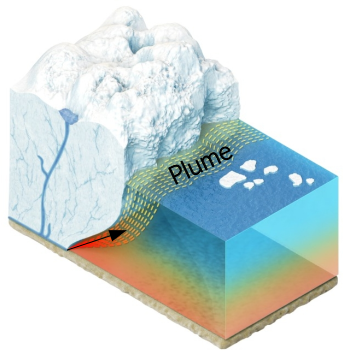7 meters of sea-level rise – what you would get if the whole Greenland Ice Sheet melted. But the tricky question is: how much of this ice will be melted in the next decades, and how fast will it occur? This piece of information is critical in order to plan for present and future populations living in coastline areas, all around the world. How much and how fast can the Greenland Ice Sheet melt ? In ...[Read More]
Water plumes are tickling the Greenland Ice Sheet

